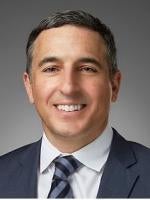At last week’s America’s Physician Groups Spring conference in San Diego, California, we listened as physicians and health system leaders described the ways in which they are responding to short and long term challenges to the sustainability of America’s healthcare system in its current form. It now stands at a critical juncture, facing challenges such as provider shortages and burnout, increasing concerns around access and cost for pharmaceutical products and other supplies, the increasing burden of managing chronic diseases, rising demand for services across the spectrum from an aging population, and balancing the transition to value-based care models in a predominantly fee-for-service environment.
There was a sense of sobriety among the participants about the frailty of the healthcare system now, particularly in light of the increasing importance of maintaining cybersecurity defenses and ensuring continued availability of pharmaceutical and other medical products in a more tenuous global geopolitical moment, all while combating rising costs and workforce shortages. However, nearly every speaker balanced their concerns with a real sense of opportunity and hope that if we are forced to think in new ways to solve the industry’s challenges, we will create innovative solutions that can be adopted and scaled by others in order to create a more sustainable and equitable healthcare system.
Here, we outline the key areas of focus described by leaders at the conference:
Addressing Patient Experience and Expanding Clinical Capabilities with AI Tools
We prepared a separate blog post delving into the substantial discussions around AI tools and their applications from the perspective of patients and caregivers, and with a focus on particular leverage for these applications in value-based care. Providers explained that with ambient listening technologies, clinical decision support tools, remote patient monitoring, targeted identification of patients for preventative care services (like expedited mammograms), asynchronous communications, and collaborative opportunities with clinical social workers to solve for health-related social needs, they are making strides in these areas. As we describe in that article, the group’s enthusiasm around AI’s capabilities was tempered by the still-developing nature of technology and the ethical/legal concerns that impact its deployment in clinical settings.
Investing in Physician Leadership Training to Support Retention and Quality Improvement
One of the most striking presentations on innovation did not involve AI. Instead, a California federally qualified health center (FQHC) described how its relatively modest efforts to invest in physician leadership development had a hugely positive impact on physician morale, leadership pipeline, retention rates, and overall culture. Specifically, the FQHC reported that the role of local medical directors in its organization had a turnover rate as high as 30% before it adopted this new leadership training program. Those roles now have a retention rate of 100%, and they gave significant insight into their approach.
First, the FQHC identified its goals of fostering a sense of ownership and responsibility among physicians for the organization’s quality and care outcomes, creating psychological safety and trust among its physician leaders, and building a sense of camaraderie among all employees. Second, the FQHC applied for and received grant funding to hire outside professional advisors on clinical leadership development. Third, they established a unified training framework and required that all local medical directors participate in the related physician leadership learning activities.
With monthly meetings in which physicians had a few hours of protected time for learning about self-development, clinical leadership, conflict resolution, team-building and related concepts, as well as peer-to-peer networking, the organization created a total cultural shift among physician leaders that has spread to other employees. Physicians reported more comfort in reaching out to colleagues for help, collaborating on issues, a stronger sense of ownership for outcomes, and better competency in managing and resolving conflicts in a team-based care environment. Further, the organization reported that these efforts have had a positive impact on its transition further into value-based care models. With additional training, medical directors have been able to communicate change management processes more effectively and expand buy-in for new strategies and action planning across the team. Finally, the organization reported that they have seen improvements in patient satisfaction scores since implementing the new training program.
Restructuring Physician-Led Teams for Success in Value-Based Care
Speakers at APG focused on the need to support providers in adopting value-based care models and focus on preventative, holistic care that supports all facets of a patient’s healthcare needs, improves quality, and reduces the total cost of care. In moving into a value-based model with prepayment elements, providers reported a sense of security and flexibility in caring for patients with a proactive approach when compared to traditional fee-for-service. To support this transition, organizations identified elements of the physician workload that can be safely and appropriately transitioned to others in a team-based care model. For example, care navigators/coordinators, social workers, pharmacists, nurses, and other community health workers may be better positioned to help patients navigate issues impacting their health, including assisting with preventative care appointments, care escalation/navigation, social determinants of health (including transportation support and food, job, and housing security), medication reconciliation/pharmacy access, insurance questions, and so on.
In moving into this model, physician-led teams can rethink their clinic scheduling processes, and focus on identifying high-risk patients with real time data to ensure access and attention is prioritized early for those who need it most. Non-physician staff can add substantial value in coordinating complicated care or social needs and ensuring access to new products and services, like chronic disease management or post-acute care programming. In case studies reported at the conference, addressing social determinants of health needs allowed some organizations to achieve significant reductions in emergency department, inpatient and post-acute care utilization, saving millions.
In support of the transition to team-based care, speakers highlighted the need for robust clinical and non-clinical employee education on the organization’s quality and outcomes goals and why change management processes for staffing and workflows mattered and how they would impact the big-picture strategy. They also noted that for all employees involved in value-based care, they were able to achieve provider alignment and reward positive behavioral changes with meaningful financial incentives that were based on the organization’s quality and performance goals.
Conclusion
The healthcare industry’s future hinges on its ability to innovate in the face of growing challenges. By embracing technology, focusing on sustainability, and fostering partnerships, leaders in the field are paving the way for a healthcare system that is not only more efficient and accessible but also more responsive to the evolving needs of patients and providers alike.






 i
i


